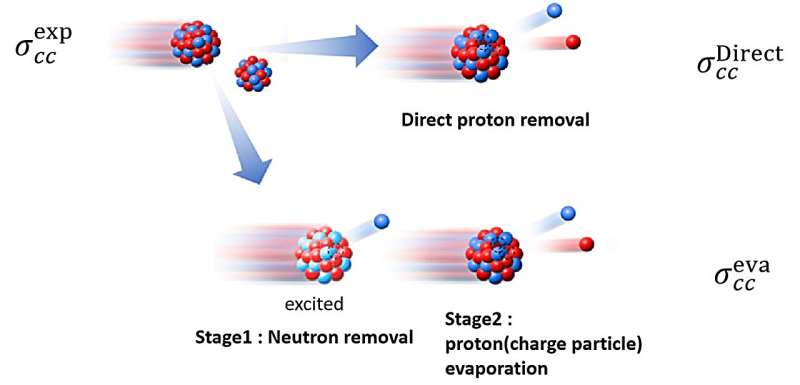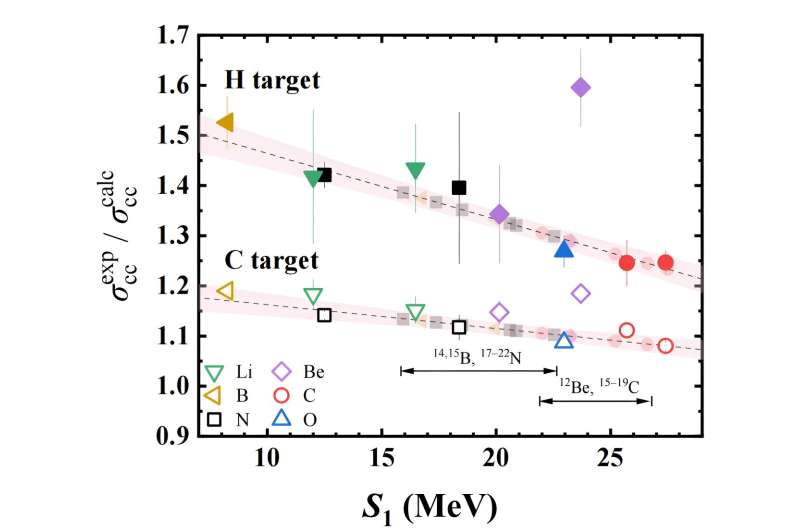This article has been reviewed according to Science X's editorial process and policies. Editors have highlighted the following attributes while ensuring the content's credibility:
fact-checked
trusted source
proofread
Scientists report on a new approach for deducing proton radii from charge-changing reactions

A study systematically measured the charge-changing reaction cross section of 24 light nuclei on carbon and hydrogen targets at the GSI Helmholtz Centre for Heavy Ion Research in Germany.
The team concluded that the charge-changing reaction measurement should include an extra contribution from the proton evaporation process, besides the direct proton removing process, which can be described in the framework of the Glauber model. The findings explain the problem in charge-changing reaction studies, where experimentally measured cross sections are always higher than expected from theoretical models.
"In deducing nuclear charge radii from charge-changing reactions, can one consistently treat the experimental data on different reaction targets? What is still missing in the current model analysis? We addressed these questions with new accurate data at 900A MeV," Sun says.
The researchers found a robust correlation between the contribution to the measurement from the proton evaporation process right after the neutron removal process and the nucleon separation energy, an inherent property of the nucleus itself. This correlation is supposed to be valid for predictions of most exotic nuclear systems (at least for the p-shell nuclides of interest in the paper) since it is obtained by interpolation.

This enabled the researchers to extract, for the first time in the same framework, the point-proton distribution radii of nuclei from data of charge-changing reactions on various reaction targets, particularly for the exotic nuclei, which were hardly accessible using other experimental approaches.
They obtained consistent results for the nuclides with even proton numbers. For the most neutron-rich nuclei with odd proton numbers, systematic differences seem to exist in radii extracted from two target data, i.e., the carbon target data give slightly larger radii than the hydrogen target data. This may point to the effect of different hadron probes or the point-proton distribution form of exotic nuclei.
The paper is published in the journal Science Bulletin, and this study was led by Prof. Baohua Sun (School of Physics, Beihang University) and Prof. Isao Tanihata (School of Physics, Beihang University and Research Center for Nuclear Physics (RCNP), Osaka University).
More information: Jichao Zhang et al, A new approach for deducing rms proton radii from charge-changing reactions of neutron-rich nuclei and the reaction-target dependence, Science Bulletin (2024). DOI: 10.1016/j.scib.2024.03.051
Provided by Science China Press




















